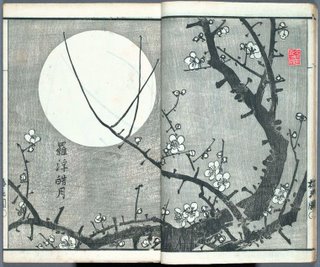 thus reads a short section of a collection of stories by laura bancroft called 'twinkle and chubbins.'
thus reads a short section of a collection of stories by laura bancroft called 'twinkle and chubbins.' it was illustrated by maginel wright barney, someone who clearly had a knowledge of what was going on in japanese prints.
it was illustrated by maginel wright barney, someone who clearly had a knowledge of what was going on in japanese prints. and well she should. her brother had quite a collection. his name was frank lloyd.
and well she should. her brother had quite a collection. his name was frank lloyd.

author of the book laura bancroft had
quite a well-known brother as well, l frank baum. well, laura bancroft had a brother but the author of the book did not, because the author of the book was l frank baum himself, using his sister's name.
(interestingly, jays and crows are related as well.)


 just as i had dis- cov- ered this little gem (which all of the rest of you probably knew already), pk ran a wonderful oz entry by l frank, with illustrations by ww denslow (seen here as well). so benefit by the wonderful links he, as is his wont, delivers to us.
just as i had dis- cov- ered this little gem (which all of the rest of you probably knew already), pk ran a wonderful oz entry by l frank, with illustrations by ww denslow (seen here as well). so benefit by the wonderful links he, as is his wont, delivers to us.and let me point you to the complete 'twinkle and chubbins.'
Labels: biho hirose, maginel wright enright, ohara koson, seitei (shotei) watanabe, sugakudo nakayama, Utamaro Kitagawa




















































